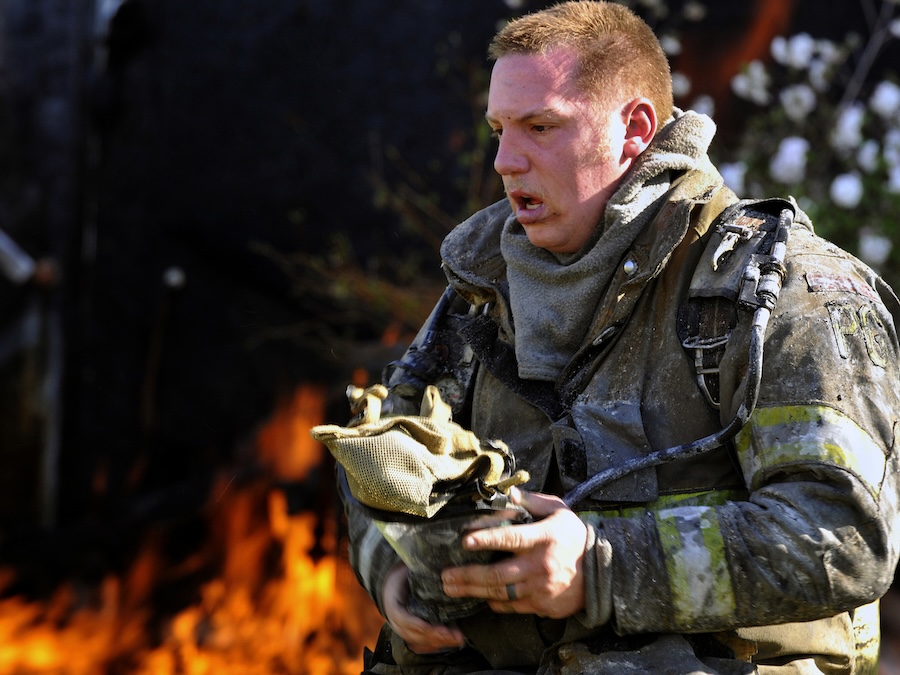Firefighters face real danger, battling intense heat, thick smoke, and a range of hazardous substances. While physical fitness and agility are crucial for survival, protecting their respiratory health is equally important, especially for long term health.
In the face of such dangers, a comprehensive approach to firefighter health and well being is necessary. Fire departments follow NFPA Standards for firefighter occupational health. This provides a rigorous physical and medical evaluation, including lung function testing.
This article delves into the importance of respiratory health for firefighters, including the role of spirometry in assessing and maintaining lung health, and respirator fit testing which is a key component of firefighter personal protective equipment.
A Holistic Approach to Firefighter Health and Fitness
Firefighting needs a high level of physical and mental preparedness. Fire departments implement comprehensive health and fitness programs to ensure firefighters are up to the challenge. Protecting firefighters from smoke and hazardous air during incidents is particularly important. This is where respiratory protection and preparedness come into play, especially lung function testing and respirator fit testing.
Lung function testing
Firefighters are exposed to smoke and noxious fumes, so the use of self-contained breathing apparatus (SCBA) is often mandatory. This places a significant burden on the lungs. Spirometry is a pulmonary function test that measures how much air a person can inhale and exhale, and how quickly they can exhale. It's a valuable tool for assessing lung health and detecting respiratory problems. For firefighters, who are regularly exposed to hazardous conditions, spirometry serves several important purposes:
- Baseline Assessment: Establishing a baseline lung function measurement allows for tracking changes over time.
- Early Detection of Lung Disease: Spirometry can identify early signs of lung conditions, such as chronic obstructive pulmonary disease (COPD) which firefighters may be at increased risk of developing.
- Monitoring Respiratory Health: Regular spirometry testing allows for monitoring the impact of firefighting activities on lung function and identifying any potential deterioration.
- Fitness for Duty Evaluation: Spirometry results can be used to assess a firefighter's respiratory fitness for duty.
Fast Response On-Site Testing (FROST) is a mobile occupational health provider in California. They have been providing lung function tests to fire departments and other first responder agencies for around 30 years. FROST has found that spirometry is essential in OSHA-mandated respiratory medical clearances. Spirometry also helps firefighters and first responders to better understand their overall health and get ahead of potential long-term health and safety issues.
COVID’s impact on lung health
During COVID, spirometry was paused in all areas except clinically driven hospital-based needs. As the restrictions for spirometry have been lifted, FROST has noticed a potentially troubling trend in the "failed screenings" (patients that need follow-up before clearance). In these cases, there may be a link between lower lung function and COVID exposures, especially after hospitalization or long COVID. While this trend is not definitive, these findings are being monitored.
Why Respirator Fit Testing Matters
Beyond spirometry, testing for proper fitment of respirators is critical for firefighter respiratory health and wellness. Firefighters operate in environments filled with toxic gases, particulate matter, and oxygen-deficient situations. SCBA provides a vital lifeline, delivering clean, breathable air. However, the effectiveness hinges on a proper seal between the respirator mask and the firefighter's face. This is where respirator fit testing is indispensable.
A poorly fitting respirator can allow contaminants to leak in, compromising the firefighter's safety and putting their health at serious risk. Even small leaks significantly reduce the protection offered by the respirator. These leaks can occur due to various factors. Facial hair and changes in body weight over time can affect the fit of respirators. Individual differences in facial structure, such as prominent cheekbones or a narrow nose bridge, can also affect how a respirator fits on or over the face.
Respirator fit testing addresses these issues by evaluating the seal between the respirator and the firefighter's face. It ensures that the respirator effectively protects the wearer from hazardous airborne contaminants.
OSHA's Role
The Occupational Safety and Health Administration (OSHA) has established stringent regulations regarding respiratory protection in the workplace. There are specific requirements for respirator fit testing as outlined in OSHA regulation 29 CFR 1910.134. Specifically, employers must provide respirators to employees exposed to hazardous airborne contaminants and ensure that these respirators fit properly.
There are initial and ongoing respirator fit testing requirements for fire departments, including:
- Initial Fit Testing: Firefighters must undergo fit testing before being assigned to use a respirator.
- Periodic Fit Testing: Fit testing must be repeated annually, or more frequently if there are changes in the firefighter's facial features or other conditions that could affect the respirator fit.
- Record Keeping: Employers are required to maintain detailed records of fit testing, including the date of the test, the type of respirator used, and the results of the test.
- Training: Firefighters must receive comprehensive training on the proper use and maintenance of respirators, including how to don and doff the respirator correctly and how to perform user seal checks.
Compliance with OSHA's respirator fit testing requirements is not just a legal obligation; it's a fundamental aspect of ensuring firefighter safety.
Fostering a Culture of Respiratory Protection
While adhering to OSHA regulations is essential, fire departments should strive to cultivate a culture that prioritizes respiratory protection and lung health. Departments can implement a variety of programs to make respiratory health a priority. This includes prioritizing respirator fit testing, incorporating spirometry into firefighter health assessments, and providing clear communications on expectations for proper SCBA use and maintenance. By doing so, fire departments can significantly reduce the risks faced by their personnel and ensure that every breath they take is a safe one.
A version of this article originally appeared on our sister website, Firefighter Toxin Tests.



